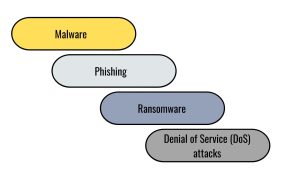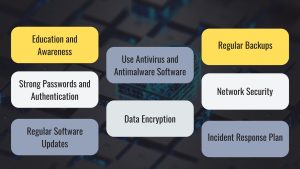content
Quality Assurance
June 27, 2024
6 min read
Introduction
In today’s interconnected world, where nearly every aspect of our lives is touched by technology, cybersecurity has become a critical issue. From personal information to corporate data, our digital assets are constantly under threat from cybercriminals. As technology continues to evolve, so do the tactics of those trying to exploit it. Understanding the importance of cybersecurity and implementing robust measures to protect your assets is more important than ever.
Understanding Cybersecurity
Cybersecurity refers to the practice of protecting systems, networks, and programs from digital attacks. These attacks typically aim to access, modify, or destroy confidential information, extort money from users, or disrupt normal business processes. Common types of cyber threats include:

- Malware: malicious software such as viruses, worms, and Trojans designed to harm or exploit any programmable device or network.
- Phishing: deceptive attempts to obtain confidential information by posing as a trusted organisation via email or other communication channels.
- Ransomware: a type of malware that threatens to publish the victim’s data or block access to it unless a ransom is paid.
- Denial of Service (DoS) attacks: attacks designed to shut down a machine or network, making it unavailable to its intended users.
The Importance of Cybersecurity
The importance of cybersecurity cannot be overstated. In a world where data breaches and cyberattacks are becoming increasingly common, the potential damage is enormous. The consequences of a cyberattack can range from financial losses and reputational damage to legal consequences and business disruption. For individuals, this could mean identity theft or loss of personal data. For businesses, the stakes are even higher, with the potential for significant financial losses, loss of customer trust, and fines from regulators.
Protecting Your Digital Assets
To protect your digital assets, it’s important to take a comprehensive approach to cybersecurity. Here are a few key strategies.

- Education and Awareness
One of the most effective ways to improve cybersecurity is through education and awareness. Make sure you and your team are aware of the latest threats and understand the importance of following best practices. Regular training sessions can help keep everyone up to date on the latest phishing tactics, malware threats, and safe online behaviour.
- Strong Passwords and Authentication
Use strong, unique passwords for all your accounts and change them regularly. Implement multi-factor authentication (MFA) wherever possible to add an extra layer of security. MFA requires users to provide two or more verification factors to gain access to a resource, making it much more difficult for cybercriminals to gain unauthorised access.
- Regular Software Updates
Keep your software, apps, and systems up to date. Software updates often include fixes for security vulnerabilities that cybercriminals can exploit. Whenever possible, enable automatic updates to ensure you don’t miss out on critical fixes.
- Use Antivirus and Antimalware Software
Install reputable antivirus and antimalware software to protect your devices from malicious attacks. Make sure these tools are regularly updated to provide the best protection against new threats.
- Data Encryption
Encrypt sensitive data to protect it from unauthorised access. Encryption converts data into a code that can only be decrypted with the correct decryption key, making it much more difficult for attackers to access the information.
- Regular Backups
Back up your data regularly to ensure that you can restore your information in the event of a cyber-attack. Store your backups in a secure, separate location to prevent them from being compromised.
- Network Security
Protect your network with firewalls, virtual private networks (VPNs), and secure Wi-Fi connections. A firewall can block unauthorised access to your network, while a VPN can provide a secure connection when accessing the internet.
- Incident Response Plan
Develop and maintain an incident response plan to ensure that you are prepared to respond quickly and effectively to a cyber-attack. This plan should outline the steps to take in the event of an attack, including communication strategies, data recovery procedures, and legal considerations.
Conclusion
In the digital age, cybersecurity is a shared responsibility. By taking proactive steps to protect your digital assets, you can significantly reduce your risk of becoming a victim of a cyberattack. Stay up-to-date with the latest threats, implement robust security measures, check your software, and continually evaluate and improve your cybersecurity practices. Remember, in an ever-changing cyber threat landscape, vigilance and preparedness are your best defence.
If you have any questions or an idea for a project, contact us via sales@instandart.com or fill out the form on the main page of the site to discuss. We are always ready to help!
